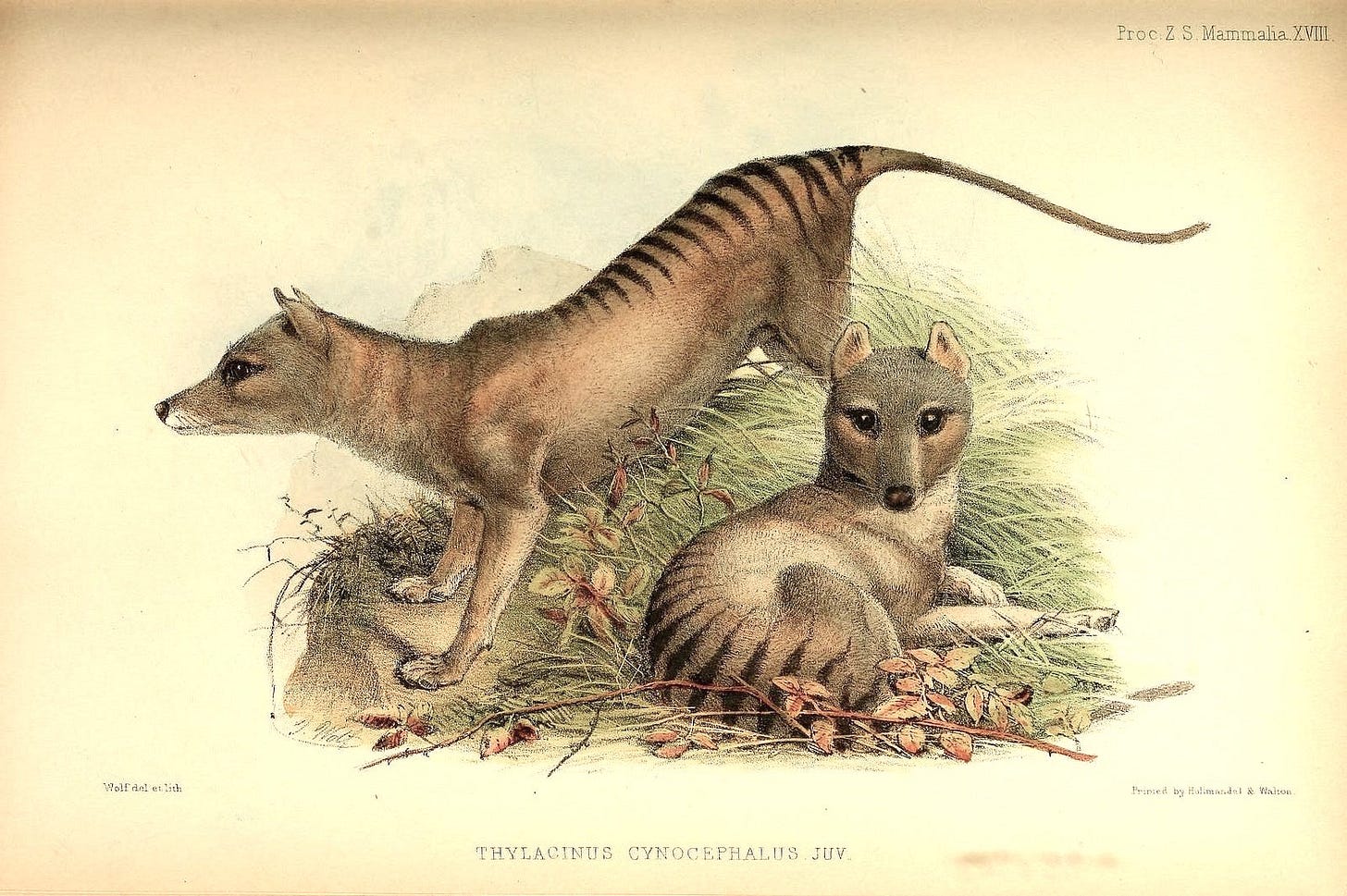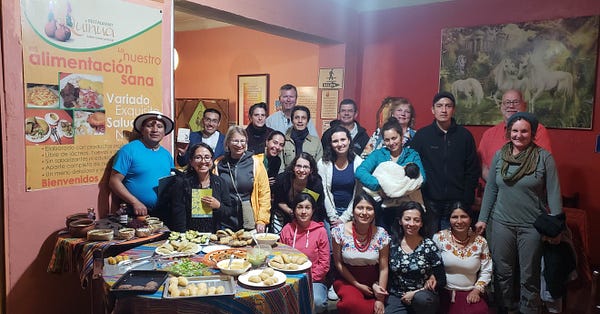🌿Wild Ones #30: Environmental Communication Digest
Eco-Keyword: 'Behavior' + An illustrated intro to Critical Discourse Analysis + The inequity of species names + How to be a better ancestor in 2021 + more!

Happy New Year everyone! Welcome back to Wild Ones, a bi-weekly digest by me, Gavin Lamb, about news, ideas, research, and tips in ecowriting, ecolinguistics and environmental communication. If you’re new, welcome! You can read more about why I started Wild Ones here. Sign up here to get these digests in your inbox:
Environmental Keyword
Each week I explore a new environmental keyword. I hope you find these keywords useful in your own ecowriting, environmental storytelling and communication. This week I look into the keyword ‘behavior’ from a fascinating entry in the book ‘Critical Terms for Animal Studies.’
‘Behavior’
In the introduction to her entry on ‘behavior,’ Alexandra Horowitz, senior research fellow and head of the Dog Cognition Lab at Barnard College, Columbia University, writes:
“How can we know anything about nonlinguistic others? One answer is that we can learn about these others by studying their behavior. Ethologists study animal behavior in natural settings; comparative psychologists note resemblance (or lack of resemblance) of mental function of different species based on their observed behavior; Animal Studies often takes as its subject the interaction, or result of interaction, between two or more species.”
Even though behavior, of both human and nonhuman beings, is the main interest in all these fields, Horowitz points out that the term is rarely defined, and when it is, it’s not very straightforward. Like in the intro to the Encyclopedia of Human Behavior, which defines behavior as “complex, quixotic, and difficult to fathom.”
Horowitz suggests that while many textbooks on behavior mostly explore examples without clearly defining the term, her aim here is to explore “the complexities of the concept and the slippery use of the word…”
For example, a common definition of behavior is something like “everything we do that can be directly observed” or “what an animal does.” But as Horowitz points out, ‘what “do” or “does” means is left unexplored.”
One thing that makes questions about behavior complex, says Horowitz, is how we might emphasize different aspects of our question:
“Why do dogs wag their tails? (How is it useful, what purpose does it serve?
Why do dogs wag their tails? (How did this behavior arise in the species?)
Why do dogs wag their tails? (What mechanism causes the behavior?)
Why do dogs wag their tails? ( Why tails and not some other body part?)”
There is also the issue of anthropomorphism: Humans might not be able to ‘see’ what animals are doing because:
“An animal’s Umwelt, or worldview, defined by her sensory and cognitive capacities as well as the environmental niche she fills, differs from that of humans…A dog’s appearing to stare blankly into space, for instance, may be characterized as “doing nothing” – or that dog, who can detect high-frequency sounds, may be hearing something and being “vigilant” or smelling the odor of another dog drifting toward him on the breeze.”
My own interest in the eco-keyword ‘behavior’ comes from my research on the role of language and communication (human and nonhuman) in mediating sea turtle-human relationships in Hawai‘i. There, I am interested in how people make sense of (and talk about) sea turtle behavior. But also how, through examining sea turtles behavior, we can understand how sea turtles might be making sense of our behavior too.
For more on the keyword ‘behavior,’ I reccomend checking out Horowitz’ fascinating book Our Dogs, Ourselves: The Story of a Singular Bond. Horowitz also mentions Jakob von Uexküll’s concept ‘Umwelt’ which you can read more about in his classic book: A Foray into the Worlds of Animals and Humans.
🔭 Tools & Tips
Earth School from TED ED: “30 Quests for students around the world to celebrate, explore and connect with nature.” This looks like a great resource of environmental educators looking to bring multimedia resources into the classroom.
How to Do a Critical Discourse Analysis (CDA) on Wikihow. I recently came across this neat illustrated how-to guide to CDA, a key approach used in ecolinguistics to analyze text and media about environmental issues. It’s created by Christopher Taylor, an Adjunct Assistant Professor of English at Austin Community College in Texas.
📰 News and Events
New Blue Whale Population Discovered After Scientists Hear Unknown Song. By Dharna Noor in Earther.
“The Stories We Tell: Reflective Writing to Examine How Nature, Diversity, and Place Influence our Teaching,” with Naamal De Silva. From North American Association for Environmental Education. (was held on Dec 10, 2020, but you can watch the webinar here).
No Time to Waste. Eco-Art Competition 2021. From EarthX.
New Year’s Resolutions for the Planet. By Claire O’Neill and John Schwartz in the New York Times. Also If you haven’t seen ‘Who Gets to Breathe Clean Air in New Delhi?,’ a visual media report by the nytimes, I highly reccomend checking it out. I think it’s a great example of the power of visual storytelling to convey the research on ecological crises and t
Intercultural Learning Community on Food, Culture and Social Justice, Part II. By Joan Gross in the Food Anthropology Blog:
📚 Research
Echo Chamber Effects in the Climate Change Blogosphere. In Environmental Communication (2020).
Climate Change: Expanding Anthropological Possibilities. In the Annual Review of Anthropology (2020).
The sociology of sea turtle research: evidence on a global expansion of co-authorship networks. In Biodiversity and Conservation (2018).
The inequity of species names: The flora of New Caledonia as a case study. In the journal Biological Conservation (2020): “Few plants from New Caledonia have been named after women or local people. Species names may play a significant role in species perception and conservation. Naming practice should be more inclusive and reflect cultural diversity.”
Reducing the gap between scientific knowledge and decision-making processes in a threatened species. In Biological Conservation (2020): “We show some examples of how scientific evidence, and the knowledge and participation of different parties, helped to start promoting regulations for two of the main threats affecting [Andean Condors], poisoning and lead contamination.”
New books I’m reading this month: This Radical Land: A Natural History of American Dissent by Deagen Miller. And Disturbed Forests, Fragmented Memories: Jarai and Other Lives in the Cambodian Highlands, by Jonathan Padwe (Padwe was also a member on my Ph.D. dissertation committee!).
💡 Ideas
A resolution for 2021: Be a better ancestor. By Kate Yoder in Grist
Thank you, Barry Lopez. An obituary and selection of the environmental writers’ essays published in Orion Magazine, by the Orion Staff.
Whale Whisperers: Making Deep Contact. An interview with James Nestor:
“In the late 20th century, a handful of scientists proved that aquatic mammals have advanced communication capabilities and a consciousness strikingly similar to humans. Author and adventurer James Nestor leads us on a deep dive into the mystery of marine mammal consciousness, and the story of how a small band of freedivers, pushing the limits of human endurance, is finding that saving the whales may become the story of the whales saving us.”
Kathleen Jamie: a life in writing. An interview with the nature writer by Sarah Crown in the Guardian.
Mustafa Santiago Ali describes the path forward for environmental justice. An interview by Carl Segerstrom in High Country News.
We are shaped by the sound of wind, the slant of sunlight. By Barry Lopez in High Country News.
Henry David Thoreau’s 1862 essay on “Walking” published in the Atlantic.
2020 Year in Review from Edge Effects Magazine: “Every December, the Edge Effects editorial board reflects on all the environmental thinking, writing, art, and research we’ve had the great fortune to publish throughout the year.”
Language and Food Justice in Oregon (video), from anthropologist Joan Gross:
“Joan Gross’ research interests range from language to food. While it could be said that the two are linked through the mouth (language coming out and food going in) it is more a concern with local culture in the face of globalization that ties the two areas together (read more here)”
💬 Quotes I’m thinking about


“Walking as art calls attention to the simplest aspects of the act: the way rural walking measures the body and the earth against each other, the way urban walking elicits unpredictable social encounters.”
“The rhythm of walking generates a kind of rhythm of thinking, and the passage through a landscape echoes or stimulates the passage through a series of thoughts. This creates an odd consonance between internal and external passage, one that suggests that the mind is also a landscape of sorts and that walking is one way to traverse it.”
– Rebecca Solnit, in Wanderlust: A History of Walking
✏️Writings from my desk
What We Say When We Talk With Dogs: A 'review of a chapter on human-dog communication in Alexandra Horowitz’s book, Our Dogs, Ourselves: The Story of a Singular Bond.
Here’s my 2020 in review digest with 10 pieces I wrote last year, in case you missed it.
Thanks so much as always for your interest in my work, and if you found this useful, I'd love to hear from you, leave a comment to let me know what you think about this digest:)






